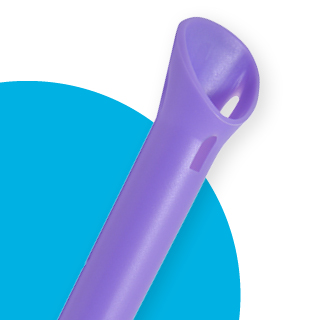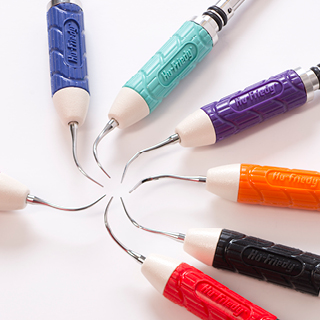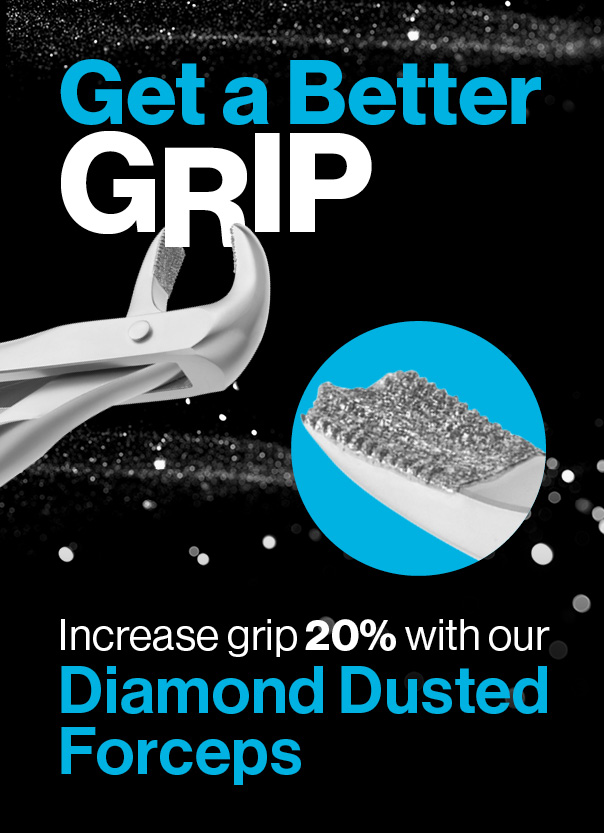Blog
Aerosol Management and HVE Best Practices

How to Reduce Aerosols While Providing Optimal Patient Care Using Ultrasonic Instruments
As we learn more about how COVID-19 is transmitted, dental practice guidelines are evolving. The U.S. Centers for Disease Control (CDC) notes in its interim guidance for dental settings (most recently updated on August 28, 2020 as of this writing), “There are currently no data available to assess the risk of SARS-CoV-2 transmission during dental practice.” So far, no clusters of COVID-19 infection have been found in dental settings, the CDC reports.
However, the CDC writes, the virus has been shown to persist in aerosols. And instruments such as handpieces, ultrasonic scalers, and air-water syringes “create a visible spray that can contain particle droplets of water, saliva, blood, microorganisms, and other debris.”
While the CDC advises dental practices to avoid aerosol-generating procedures whenever possible, the agency also describes precautions that can be taken to minimize droplet spatter and aerosols when such procedures are necessary and when patients show no signs of coronavirus infection. These measures include the use of four-handed dentistry, dental dams, and high evacuation suction (also known as high-volume evacuation, or HVE).
It’s important to acknowledge that the CDC interim clinical guidance is based on best available evidence. Dental practitioners should also use their best clinical judgment regarding the use of ultrasonic instrumentation, based on factors such as the type of procedure, the needs of the patient, the availability of PPE, and the ventilation of the treatment area. Keep in mind that regulations will also vary from state to state.
Best Practices for Using Evacuation Systems to Control Aerosols
Two types of oral evacuators are used to remove liquid and debris from the mouth during dental procedures: saliva ejectors used with low-volume evacuation (LVE) systems and high-volume (HVE) systems – each generally used with single-use/disposable tips.

Studies show that the bores of saliva ejectors are too small to remove aerosols or spatter effectively during aerosol generating procedures. HVE devices, on the other hand, feature large bores of eight to 10 millimeters. Studies show that HVE systems can reduce aerosols by up to 90%.1
For maximum effectiveness, it’s critical to use HVE directly at the treatment site. Hold HVE devices approximately six to 15 millimeters away from the active tip of the aerosol-generating instrument.
Because your HVE system will likely see increased use at your office for the foreseeable future, make sure your system has been set up properly and is in good working order. Age, overuse, and buildup in the evacuation line can cause HVE devices to lose their strength.
A 2017 article in RDH Magazine describes two ways to test your HVE system, one using water and another using salt or sifted talc powder to simulate particles. Properly set HVE systems should be capable of evacuating 100 cubic feet of air per minute.
Although four-handed dentistry is recommended when practicing without an assistant, a new HVE option is available to help mitigate the risk of disease transmission when using aerosol generating devices without an assistant: HVESolo™ disposable evacuation tips by Palmero Healthcare. The short length (2.5 inches) and lightweight shaft allow solo practitioners to easily and comfortably use HVE in their non-dominant hands. The unique three-vent design and smooth rounded edges of these disposable tips serve to maximize suction while allowing gentle retraction of soft tissues to enhance patient comfort.
Best Practices for Using Power Scaling/Ultrasonic Instruments
Hygienists can adjust power and water settings on their ultrasonic devices to minimize aerosol generation. Ultrasonic devices use water to cool their vibrating tips. But the water does not need to be aerosolized to achieve this objective. In fact, water that is aerosolized before reaching the tip cools the vibrating stack, but may not cool the tip at the treatment site.
Using a drip or stream of water will cool the tip at the treatment site while minimizing aerosol creation.2
You may have to rethink your approach to ultrasonic scaling in order to maximize tip effectiveness while minimizing aerosol generation. Typically, the process for preparing for ultrasonic scaling involves placing the insert in the handpiece and then adjusting the power and water levels until an aerosol is created and a high-pitched noise is audible.

At high generator power settings, water is atomized before reaching the end of the tip, creating a fine aerosol plume. However, by turning down the power settings, you can limit the water to a robust drip and still maintain effective debris removal. Note that most tips are designed for low-to-medium power levels. Only robust inserts (such as the #10, #1000, and Beavertail) are recommended for up to high power levels.
Here is a new process to follow to reduce aerosol production while using ultrasonic instruments:
- Check the instructions on the package insert for your chosen tip for the recommended power levels.
- Use the appropriate power level range. Tips recommended for low-to-medium power should not be used on higher power levels.
- Set water flow to a rapid drip (three drips per second) or a slow stream. The water flow rate should be 20 milliliters per minute. (You can test water flow rate using a small beaker and a timer.)
An ultrasonic tip can be just as effective with or without generating an aerosol. For example, a 30k tip will still vibrate at 30,000 cycles per second regardless of both the power setting and whether a drip, stream, or aerosol is generated.
Turning the power down will cause the tip to swing back and forth on a shorter path without changing the cycles/second. You may be used to using thinner inserts at high power levels (past recommended settings) so this change may take a little getting used to. However, the benefits to both you and your patients are numerous:
- Reduced aerosol
- Water flow reaching the tip, providing better lavage, cavitation, and acoustic microstreaming
- Effective debris removal
- Quieter generator operation
- Increased comfort for the patient
When it comes to using air polishing instruments to remove biofilm and stains, you can minimize aerosols through the correct angulation of the tip to the tooth surface.
A 90-degree angulation can result in excessive powder aerosols. Aim for a tip-to-tooth surface angulation of 60 degrees. This will help direct powder and water flow toward the HVE. Be sure to use the lowest effective power and water setting.
Note that the aforementioned techniques add another layer of protection along with HVE, appropriate PPE, and pre-procedural rinses, all helping to minimize and protect against contaminated aerosols when using power devices.
Finally, check your inserts every week to maintain optimal performance. Worn tips can diminish your scaling efficiency, resulting in more time spent on debris removal with a subsequent increase in aerosol generation.
Our free Insert Wear Guide can help you determine whether it’s time to order new tips. When your tips are worn, dispose of them responsibly through the Envirodent recycling program or the 3-2-1 trade-in program.
1 Harrel SK, Molinari J. Aerosols and splatter in dentistry, JADA 2004;135:429-437.
2 George M, Donley T, Preshaw P. Ultrasonic Debridement, Theory and Technique. John Wiley and Sons; 2014: 52-55.
All company and product names are trademarks of Hu-Friedy Mfg. Co., LLC, or Crosstex International, Inc., its affiliates or related companies, unless otherwise noted.

